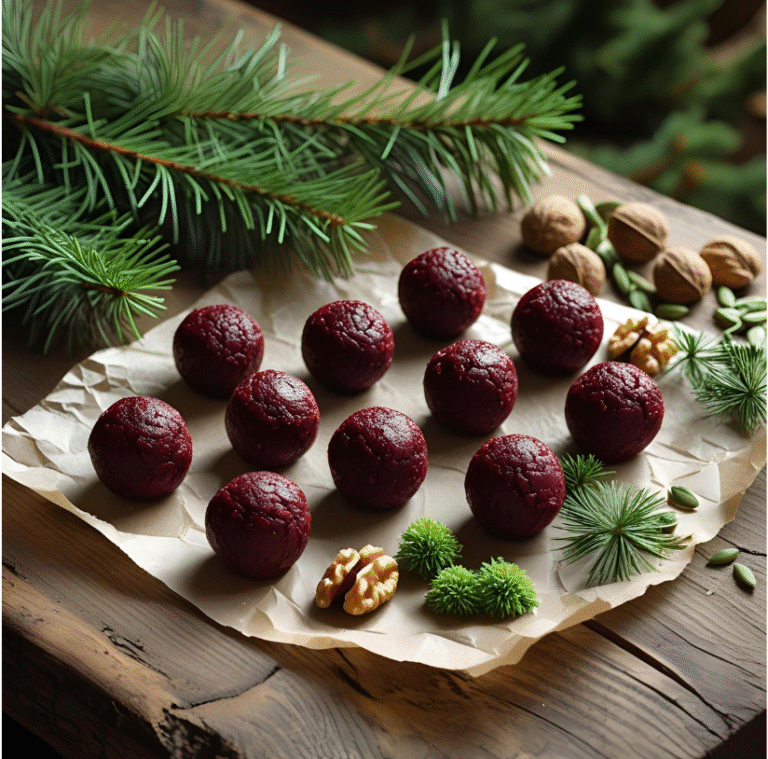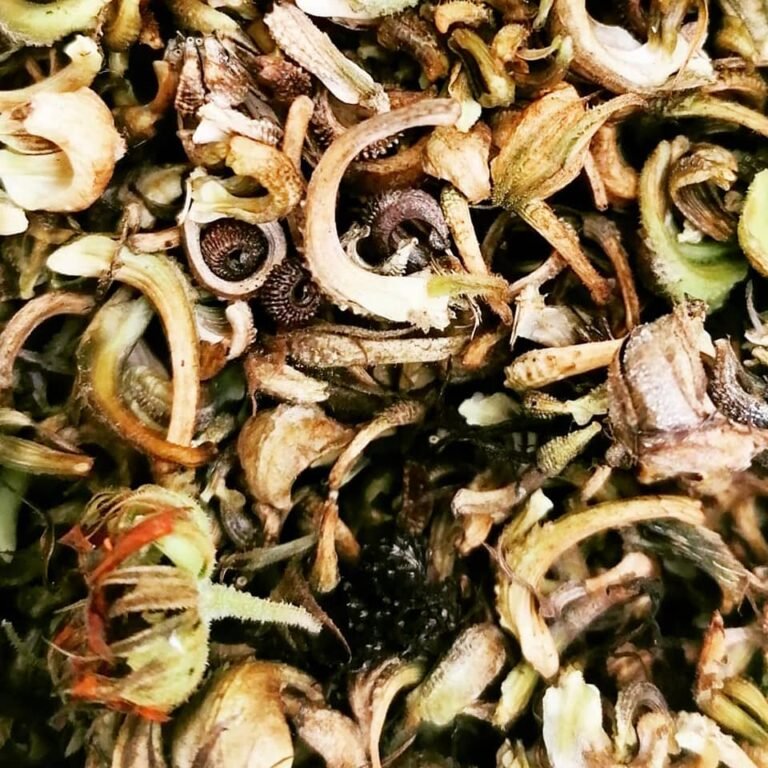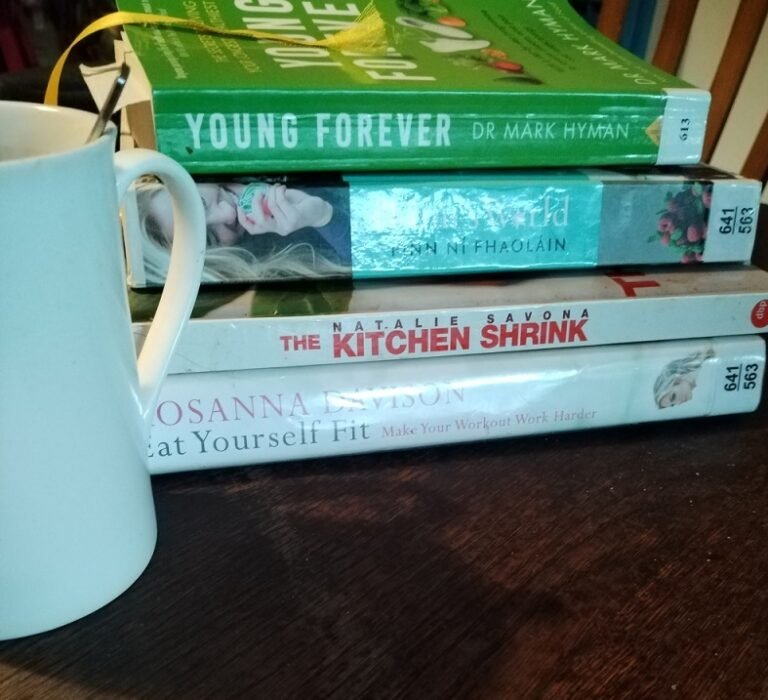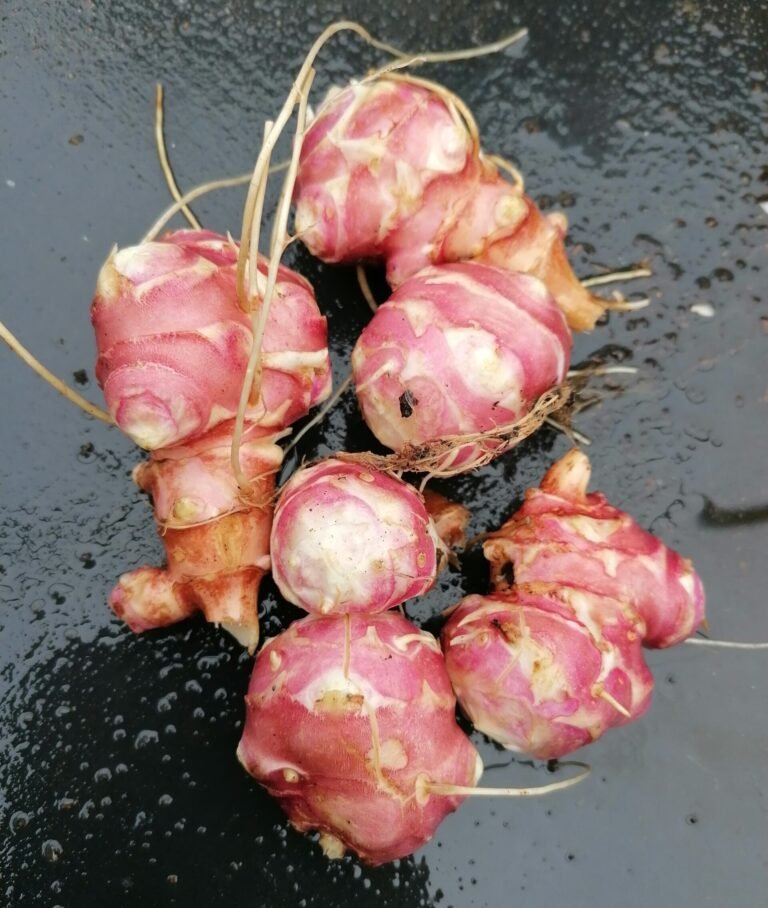
Did you know that black garlic has been around for centuries, but it’s only now taking the culinary world by storm? Buckle up, foodies and health enthusiasts! We’re about to embark on a flavor-packed journey into the world of black garlic. This isn’t your grandma’s garlic – it’s a whole new level of deliciousness with some serious health perks to boot. According to a 2023 study published in the Journal of Functional Foods, black garlic contains up to 3 times more antioxidants than its regular counterpart. So, are you ready to discover why this dark and mysterious ingredient is being hailed as the superfood of 2024? Let’s dive in!
As an Amazon Associate, I earn from qualifying purchases. This means that if you click on a link and make a purchase, I may earn a small commission at no additional cost to you.
What Exactly Is Black Garlic?
It’s funny how something so bold starts as ordinary garlic. But black garlic isn’t some rare variety—it’s just regular garlic that goes through a wild transformation. Picture fresh garlic bulbs sitting in a warm, humid space at 60°C to 90°C with 80-90% humidity for about a month. No flames, no roasting—just time and patience. Slowly, the cloves darken, soften, and develop deep, complex flavors. It’s like garlic going on a month-long spa retreat and coming out richer, smoother, and completely transformed.
Crack open a bulb, and you’ll find tender, jet-black cloves—nothing like their crunchy, pungent past selves. The sharp, fiery bite disappears, replaced by a deep, mellow sweetness. Think balsamic vinegar, molasses, maybe even a hint of tamarind or figs. And the umami? Off the charts.
Even better, black garlic tastes milder than raw garlic. No harsh bite, no lingering garlic breath—just smooth, balanced flavor. Unlike fresh garlic, which can easily take over a dish, black garlic works with other ingredients instead of overpowering them. It deepens sauces, enriches marinades, and melts seamlessly into any recipe.
So, if you love garlic or usually avoid it, black garlic deserves a spot in your kitchen. Once you try it, you’ll wonder how you ever cooked without it.
Black Garlic in Traditional Medicine and todays science
An Ancient Superfood
Black garlic isn’t just a trendy ingredient. For centuries, cultures around the world have prized it for its health benefits. Ancient Koreans used it as an energy booster and anti-aging remedy. Taoists believed it promoted longevity. In Traditional Chinese Medicine, black garlic is a powerful yang tonic that supports the spleen, liver, and kidneys. It’s also thought to boost qi (life force energy) and improve blood circulation.
Science Catches Up
Modern research is now backing up what ancient healers already knew. Studies suggest black garlic may offer a range of health benefits, from antioxidant protection to heart health. Here’s what science has discovered so far:
- Rich in Antioxidants – Studies show black garlic has higher antioxidant activity than fresh garlic. A 2009 study in the Journal of Medicinal Food found it had stronger antioxidant effects in lab tests.
- Supports Heart Health – Research in Nutrition Research and Practice (2014) showed black garlic extract lowered cholesterol and reduced atherosclerosis risk in animal models. A 2016 study also linked it to lower blood pressure.
- Fights Inflammation – Aged black garlic extract demonstrated anti-inflammatory effects in a 2013 Molecular Nutrition & Food Research study, which could help with chronic conditions.
- Boosts Immunity – Research in the Journal of Medicinal Food (2012) found black garlic extract increased natural killer cell activity, strengthening immune defenses.
- Potential Anti-Cancer Effects – A Nutrition and Cancer study (2014) suggested black garlic compounds might slow tumor growth. More research is needed, but findings are promising.
- Helps Balance Blood Sugar – A 2009 study in Nutrition Research and Practice found black garlic improved glucose tolerance and insulin sensitivity in diabetic rats. A 2018 Journal of Food and Drug Analysis study confirmed similar effects in both lab and animal models.
The Takeaway
While studies are promising, most research has been done in labs or on animals. More human trials are needed. Still, science is finally catching up with centuries of traditional wisdom. Next time you add black garlic to your meal, you’re not just enhancing flavor—you’re tapping into an age-old superfood with real health potential.
Ever wondered: How was Black garlic made before electricity
The original method for making black garlic dates back thousands of years in various Asian cultures, particularly in Korea, China, and Japan. The key was using natural heat sources and a whole lot of patience.
Here’s how they likely did it:
Underground fermentation: One common method involved burying clay pots filled with garlic in the ground. The earth’s natural warmth and insulation provided a steady, low heat perfect for the slow fermentation process.
Hot springs: In areas with geothermal activity, people would place sealed containers of garlic near hot springs. The consistent warmth from the springs created ideal conditions for developing black garlic.
Warm sand: In some regions, garlic would be buried in warm sand. The sand, heated by the sun during the day, would maintain a relatively stable temperature overnight.
Traditional ovens: In Korea, ondol (traditional heated flooring systems) were sometimes used. Garlic would be placed in clay pots and set on the warm floor for weeks.
Sun-warmed spaces: In warmer climates, garlic might be placed in sealed containers in consistently warm, dark spaces like attics or specially designed fermentation rooms.
The process could take anywhere from 30 to 90 days, depending on the method and local conditions. While these techniques required more time and attention than our modern electric methods, they allowed for the development of this prized ingredient long before the advent of electricity.
Isn’t it fascinating how resourceful our ancestors were? They found ways to harness natural heat sources to create this complex, flavorful ingredient that we’re still enjoying today!
How to Make Black Garlic at Home
I came across one method that I found very intriguing and thought worth mentioning. Eventhough, I’m not sure if it is worth trying, seeing that we have electricity these days and a lot of variables can therefore be controlled.
So, have you ever heard of making black garlic in the Compost heap? Now that’s thinking outside the box! While it’s not a common method, your compost heap’s natural heat could theoretically ferment garlic into black gold. Here’s how you might give it a shot: First, wrap your garlic bulbs tightly in several layers of food-safe plastic wrap, then seal them in a zip-lock bag. Next, bury your garlic package deep in the center of an active compost heap. The heap’s core should ideally maintain temperatures around 130-140°F (54-60°C) – perfect for black garlic fermentation. Leave it there for about 4-6 weeks, checking occasionally to ensure it hasn’t been disturbed by curious critters.
A few things to keep in mind with this earth-friendly way of doing things:
Your compost heap needs to be large and active enough to generate consistent heat.
You’ll want to monitor the temperature to ensure it stays in the right range.
Make sure your garlic is very well-sealed to protect it from bacteria in the compost.
Be prepared for some trial and error – compost heaps can be less predictable than kitchen appliances!
This method is definitely experimental, and results may vary. But hey, if it works, you’ll have a great story to tell along with your homemade black garlic! Just remember, food safety first – if anything looks or smells off when you unearth your garlic, it’s better to err on the side of caution and not eat it.
The more common way of getting the wanted results is to employ the help of a rice cooker or slow cooker or a Black Garlic Fermenter.
All you need is a rice cooker or slow cooker, some fresh garlic bulbs, and a whole lot of patience.
Start by wrapping your garlic bulbs in parchment paper, then aluminum foil. Pop them in your cooker set to the “warm” setting (around 140°F/60°C is ideal), and let the magic happen for 3-4 weeks. Yep, you read that right – weeks!
The low, steady heat slowly caramelizes the garlic, turning it black and giving it that sweet, molasses-like flavor. For perfect texture and taste, keep the temperature steady and resist the urge to peek too often.
One common mistake is using garlic that’s too dry or old – fresh is best! Also, don’t crank up the heat thinking it’ll speed things up; you’ll just end up with burnt, bitter garlic.
The easiest way to avoid all of that is to get a Black Garlic Fermenter like the YUCHENGTECH 6L Black Garlic Maker Full Automatic Black Garlic Fermenter which is made for the purpose and at around €110 wont break the bank either. That’s the one we first tried and the rest is history-as they say!
When it’s done, you’ll have cloves that are jet black, soft, and spreadable. Voilà! Your very own black garlic to impress your foodie friends or jazz up your cooking!
What are common mistakes to avoid in the fermentation process
Making black garlic might seem like a “set it and forget it” process, but in reality, there are plenty of ways things can go wrong. To help you succeed, let’s go over some of the most common mistakes and how to avoid them.
1. Temperature Fluctuations
Inconsistent heat is the number one culprit behind failed black garlic.
- Too hot? You’ll end up with burnt, bitter cloves.
- Too cool? Instead of black garlic, you might just grow mold.
To avoid this, aim for a steady 140°F (60°C) throughout the entire process. No matter how tempting it is to adjust the heat, consistency is key!
2. Peeking Too Often
I know—it’s hard to resist checking on your garlic babies. However, each time you lift the lid, you disrupt both the temperature and humidity. These fluctuations can lead to uneven fermentation or even failure. So, instead of opening the cooker frequently, trust the process and let time do its magic.
3. Using Old or the Wrong Garlic
The quality of your garlic makes all the difference.
- Fresh is best! If you start with old or dry garlic, you may end up with tough, chewy cloves instead of soft, jelly-like perfection.
- Variety matters. Not all garlic ferments equally well, so choosing the right type can drastically improve your results. If you’re unsure which variety to use, check out my guide for the best options.
4. Rushing the Process
It’s easy to get impatient, but black garlic needs time—typically 3–4 weeks. While it might seem like turning up the heat would speed things along, it actually leads to dry, unpleasant-tasting cloves. Instead, embrace the slow transformation and know that patience always pays off in flavor!
5. Moisture Mismanagement
Striking the right balance of moisture is crucial.
- Too much? You risk mold.
- Too little? Your garlic might end up dry and rock-hard.
If you’re using a rice cooker or slow cooker, placing a small cup of water nearby can help maintain humidity levels and prevent dehydration.
6. Poor Ventilation
While you do want to maintain humidity, completely sealing off airflow can cause unwanted, funky flavors. To avoid this, make sure your setup allows for a small but steady air exchange. A little ventilation goes a long way in ensuring your black garlic develops the right taste and texture.
7. Ignoring Garlic Size
Not all garlic cloves are created equal.
- Larger bulbs take longer to ferment than smaller ones.
- To avoid uneven results, consider sorting your garlic by size before starting. This way, you’ll have more consistent batches every time.
Final Thoughts
At the end of the day, making black garlic is part science, part art. If your first batch isn’t perfect, don’t be discouraged! Each attempt is a valuable learning experience that brings you one step closer to black garlic mastery. So, be patient, enjoy the process, and soon enough, you’ll have perfectly aged, sweet, umami-rich garlic to savor!
How to use it in the kitchen
Ready to dive into the deliciously unique world of black garlic cooking? This funky little ingredient is an absolute flavor powerhouse that can take your dishes from meh to mind-blowing!
Getting Started: The Basics
First things first—you can use black garlic anywhere you’d typically use regular garlic. But fair warning: this isn’t your average garlic. Instead of the sharp bite you might expect, black garlic brings a deep, caramelized umami richness that’s completely next-level.
How to Use Black Garlic in Everyday Cooking
So, how do you incorporate it into your meals? The possibilities are endless!
- Mash it into a paste for an easy spread.
- Whip it into butter for a gourmet touch.
- Slice it thin and use it as a topping for your favorite dishes.
And when it comes to popular recipes—oh boy, where do we even start?
- Black garlic aioli will revolutionize your sandwich game.
- Black garlic risotto is creamy, umami-packed heaven.
- And let’s not forget black garlic-infused ramen—every slurp is pure perfection!
Unlocking the Power of Umami
If you’re all about depth of flavor, black garlic is your new best friend. With its natural sweetness and complex umami profile, it can instantly elevate:
- Sauces
- Stews
- Marinades
In fact, it works faster than you can say, “pass the black garlic!”
Recipe Inspiration: From Starters to Desserts
Need some inspiration to get started? Here are some ideas:
Appetizers & Starters
- Black garlic & goat cheese crostini – the perfect bite-sized indulgence.
- Black garlic hummus – a smooth, savory twist on a classic dip.
Main Courses
- Black garlic & mushroom pasta – rich, earthy, and utterly satisfying.
- Black garlic-crusted steak – juicy, flavorful, and unforgettable.
Wait… Desserts?!
Yes, you read that right! Black garlic isn’t just for savory dishes—it can work wonders in desserts, too!
- Unexpectedly amazing with its deep, caramelized notes: Black garlic cheesecake
- Black garlic chocolate truffles – trust me, the natural sweetness of black garlic pairs beautifully with chocolate. Who knew garlic could be so versatile?
Final Thoughts: Why You Need Black Garlic in Your Kitchen
Well, we’ve peeled back the layers on black garlic, and what a discovery it’s been! From its intriguing fermentation process to its impressive health benefits and culinary versatility, this isn’t just a passing food fad—it’s a powerhouse ingredient that’s here to stay.
So, whether you’re a health-conscious eater, a foodie, or simply someone looking to spice up your meals, black garlic deserves a spot in your kitchen. Why not give it a try?
Your taste buds—and your body—will thank you. After all, in the world of superfoods, black is the new… well, everything! So go ahead, embrace the dark side of garlic—your culinary adventure awaits!
👉 Head over to our shop and grab a jar (or two)!






